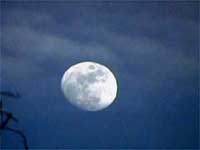Just In
- 3 hrs ago

- 3 hrs ago

- 7 hrs ago

- 13 hrs ago

Don't Miss
- Movies
 Pukaar Dil Se Dil Tak Promo: Sayli Salunkhe Impresses In First Video Of Sony TV Show, Details About Her Role
Pukaar Dil Se Dil Tak Promo: Sayli Salunkhe Impresses In First Video Of Sony TV Show, Details About Her Role - Sports
 Who Won Yesterday's IPL Match 34? LSG vs CSK, IPL 2024 on April 19: KL Rahul Stellar Batting Show Decimate Chennai Bowling
Who Won Yesterday's IPL Match 34? LSG vs CSK, IPL 2024 on April 19: KL Rahul Stellar Batting Show Decimate Chennai Bowling - Finance
 Rs 17/Share Dividend: Record Date On April 26; Buy The ICICI Group Stock To Be Eligible?
Rs 17/Share Dividend: Record Date On April 26; Buy The ICICI Group Stock To Be Eligible? - News
 Chinese President Xi Jinping Orders Biggest Military Reorganisation Since 2015
Chinese President Xi Jinping Orders Biggest Military Reorganisation Since 2015 - Education
 Exam Pressure Does Not Exist; Studying Punctually is Crucial; Says Aditi, the PSEB 2024 Topper
Exam Pressure Does Not Exist; Studying Punctually is Crucial; Says Aditi, the PSEB 2024 Topper - Automobiles
 Suzuki Swift Hatchback Scores 4 Star Safety Rating At JNCAP – ADAS, New Engine & More
Suzuki Swift Hatchback Scores 4 Star Safety Rating At JNCAP – ADAS, New Engine & More - Technology
 Dell Introduces AI-Powered Laptops and Mobile Workstations for Enterprises in India
Dell Introduces AI-Powered Laptops and Mobile Workstations for Enterprises in India - Travel
 Journey From Delhi To Ooty: Top Transport Options And Attractions
Journey From Delhi To Ooty: Top Transport Options And Attractions
Water discovered on moon

A new analysis of volcanic glass recovered from the moon in 1970s found the rocks contain traces of the constituents of water, challenging a long-held notion that the moon is perfectly dry.
Their discovery suggests that water was present deep within the moon when the pebbles were formed during violent lunar eruptions 3.3 to 3.6 billion years ago.
'Most people believed that the moon was dry,' said Alberto Saal at Brown University in Rhode Island, who was part of the team that did the research.
'People had tried to measure for 40 years and couldn't see any evidence for water ... they were not convinced we were doing something worthwhile.' The analysis, published today in the journal Nature, was a surprise because scientists believe that the moon formed when a Mars-sized planet collided with the infant Earth.
Saal and his colleagues used the extremely sensitive technique to analyse rocks collected during the Apollo 15 mission in 1971 and the last visit by people to the moon, Apollo 17 in 1972.
Testing the interior of the pebbles to avoid surface contamination, scientists found trace amounts of hydrogen along with chlorine and fluorine, which, like carbon and sulfur, are found in rocks from explosive eruptions.
The discovery of hydrogen alongside other elements suggested to scientists that water came from inside the moon and not from an external source, such as a comet.
Based on the amount of hydrogen found in the pebbles, scientists estimated the lunar magma contained 260 to 745 parts per million of water, similar to what is found in the Earth's upper mantle.
Finding water is crucial to NASA's plans for moon exploration. 'This could be really important if you want to put a base (on the moon),' said Saal. The extracted water could be used for thirsty astronauts and to create hydrogen to use as fuel.
The finding throws at least a little water on the currently favoured hypothesis concerning the moon's origin. Many scientists think that the moon was formed when a large proto-planet slammed into Earth, sending into space molten debris that eventually became the moon.
Scientists
have
long
assumed
that
the
heat
created
by
the
collision
would
have
vaporised
any
water
present
and
that
the
small
gravitational
field
of
the
primeval
moon
would
not
have
been
strong
enough
to
recapture
the
vapour.
-
 astrologyZodiac Signs And Their Ruling Planets
astrologyZodiac Signs And Their Ruling Planets -
 zodiac signsMercury Transit In Cancer On 17 July 2022: Impact On Zodiac Signs And Remedies
zodiac signsMercury Transit In Cancer On 17 July 2022: Impact On Zodiac Signs And Remedies -
 pulseIn A Rare Celestial Event, 5 Planets Line Up For The First Time In 18 Years
pulseIn A Rare Celestial Event, 5 Planets Line Up For The First Time In 18 Years -
 pulseRare Astronomical Event: After 1,000 Years : Venus, Jupiter, Saturn, Mars To Form Straight Line, To Be Visible
pulseRare Astronomical Event: After 1,000 Years : Venus, Jupiter, Saturn, Mars To Form Straight Line, To Be Visible -
 remediesWhy The Movement Of Saturn Is So Slow
remediesWhy The Movement Of Saturn Is So Slow -
 pulseWatch Venus And Mercury, In Twilight
pulseWatch Venus And Mercury, In Twilight -
 insyncExplore Mars On Your PC
insyncExplore Mars On Your PC -
 pulseTop 6 Deadliest Active Volcanoes In The World
pulseTop 6 Deadliest Active Volcanoes In The World -
 lifeVolcano House: History Blends Hospitality
lifeVolcano House: History Blends Hospitality -
 pulseEverything You Need To Know About Sperm Donation Machines!
pulseEverything You Need To Know About Sperm Donation Machines! -
 pulseA Japanese Device Has Made Breastfeeding Possible To Fathers
pulseA Japanese Device Has Made Breastfeeding Possible To Fathers -
 pulseThis Guy Has The Best Jugaad To Escape From Mosquitoes This Summer
pulseThis Guy Has The Best Jugaad To Escape From Mosquitoes This Summer


 Click it and Unblock the Notifications
Click it and Unblock the Notifications



